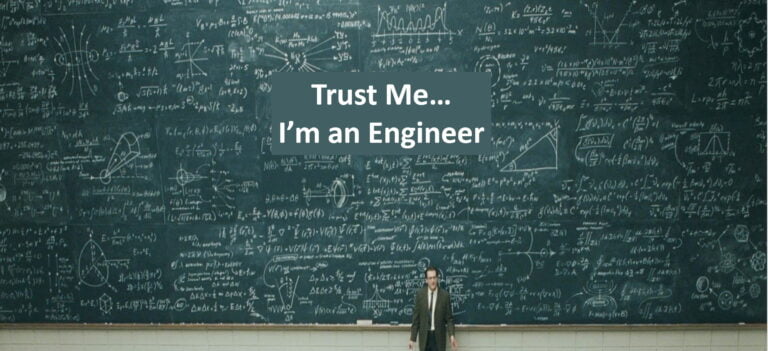Change or Perish; The Future is Guaranteed to No One by Stephen Long
“When you’re through changing, you’re through.” – Bruce Barton (Early 20th Century Advertising Executive)
Ahh, consultants!—purveyors of ideas, concepts and theoretical models. As I am considered a member of this distinguished fraternity, I realize that at times we create more problems than solutions. Take change, for example. Most clients want projects completed quickly at the lowest cost possible. Many consultants bow to this pressure by suggesting a massive reengineering solution. Just shuffle the organizational chart a little, apply a global matrix, adjust the IT system, and voila! You’ve got change! Well, not really. Simply rewriting job descriptions to change behavior is foolish and relies on simplistic solutions to complex problems. Revising formal roles is only a small part of transition and transformation. Change occurs mostly through informal networks and altering the collective belief system—it takes a skilled leader, with an arsenal of tools to bring about true change.
Reengineering creates the illusion of change, but often is not handled correctly and produces anxiety and confusion. Typically, reengineering fails to deal with the human component of change, and it is with the human component leaders are encouraged to spend their resources. Peter Drucker once said, “Leadership is vision.” While it would be unwise to contradict the person who influenced organizational management more than any other, an addendum may be applied. LEADERSHIP IS CHANGE. You can count on only one thing …Change! In the past, change occurred incrementally. Now, change occurs exponentially. Information replaces itself every 8-15 years. People under the age of 25 can expect to change careers every decade and jobs every 4 years. Entire industries will disappear and be replaced by others that we haven’t even heard of yet. How many people had heard of the Internet in 1990! Whoever heard of “Social Media” 10 years ago?
A whole new way of thinking is needed to keep ahead of the changes and increased competition. Leaders who stick with the old ways will not only miss great opportunities, but will find their organizations struggling in the backwash. The 21st Century is an era based on unpredictable, unstable events. Whatever we do, and wherever we do it, everything—work styles, economic conditions, technology, corporate structures, global communications, lifestyles, environmental responsibilities—is changing at dizzying rates. Reactive managers will only play catch up at best. Proactive executives who master the skills of human nature will hold the power to lead successful and lasting change.
It’s not the car—it’s the driver. It’s not the system—it’s the quarterback. Attach any sport analogy you want, the fact is someone has to make sure something gets done, someone has to be able to execute or you’ll be just another fatality in the new economy. Global competition has shined a spotlight of clarity upon problems more than any other time in history and mediocre leadership won’t cut it. Managers who were ineffective prior to a change initiative will be equally or even more ineffective attempting to lead change. Up to 80% of all transformation efforts fail due to shortcuts in time and money—costing more time and money down the road, exposing the organization to greater risk than originally confronted. CHANGE OR PERISH—THE FUTURE IS GUARANTEED TO NO ONE.
People are comfort-seeking organisms. It’s unnatural to seek change. We want things to stay the same. We want things predictable and stable. High performing leaders, however, are able to manage the paradox between change and stability. Niccolo Machiavelli wrote in The Prince(1505),
“It must be considered that there is nothing more difficult to carry out, nor more doubtful of success, nor more dangerous to handle, than to initiate a new order of things.”
Change begins and ends with leadership. Managers who dismiss not only their capabilities, but also those within the organization create self-limiting attitudes and behaviors within the organization. Psychologist Abraham Maslow labeled this “The Jonah Complex.” People have a basic human impulse toward growth and excellence, but executives who demonstrate The Jonah Complex focus on the inhibitions that block our natural growth tendency. Jonah was called by God to prophesy, but he was intimidated by the task. Jonah tried to run away, to avoid the challenge presented; but no matter where Jonah ran, he could find no place to hide. Finally, he accepted his fate.
So it is with the 21st Century executive—there is no place to hide and nowhere to run. Bold leaders, the leaders who believe in their organization and, more importantly, in themselves, are the people required for 21st Century demands.
Ineffective executives fear their power, their ability to lead change. Neurotically, they fear the consequences of being superior—they voluntarily dismiss and diminish their own power. In the illusion of safety and security, they limit their own personal effectiveness, thereby placing the organization they are charged to protect into a position of vulnerability.
Some people cloak their fear and defensiveness through a façade of false humility. Insecurity runs through the veins of ineffective executives, forcing them into a conflict between what they believe is socially acceptable and what’s actually needed to grow the organization. Executives who are unable to distinguish between personal anxiety and threats to the organization ultimately make poor decisions and demonstrate a lack of judgment. Human nature has shown that we repress our most dangerous and worst impulses; we also deny our best and noblest ambitions. It’s unnatural to pursue pathology as well as excellence—we seek a comfort zone somewhere in the middle. The 21st Century leader actively and openly demonstrates a pursuit of excellence and growth, whereas ineffective executives may appear as though they pursue growth opportunities, but they fail to act in a way that generates change. For most people, there’s nothing comfortable about pursuing greatness.
Why and How We Change
Change initiatives cover a wide variety of issues, but they stem from one source—dissatisfaction. Organizational dissatisfaction comes from a variety of sources: increased competition, changing workforce, new products, technology development and new government regulations, to name a few. Due to the pace of 21st Century business, moderate change initiatives occur at least yearly and major change initiatives occur every four to five years.
Change is a unique experience for each and every organization. Issues and leadership styles are different. How executives approach change is different. There is no single blueprint to follow for every organization and every executive to execute change successfully. However, there are four fundamental questions every leader must address. The competency a leader shows while addressing each question dictates the quality of the change process.
- What to Change?—Finding Point A
- What to Change To?—Identifying Point B
- How to Cause the Change?—The strategy you choose to apply
- While Creating the Change, Are You Building Resistance or Enthusiasm?—Change occurs more effectively and efficiently when people are excited about it
Successful change efforts occur when people recognize they’re going to be more effective in their jobs and more successful in their careers while also helping their organization be more competitive, responsive and responsible. Change initiatives address a variety of issues including:
- Fostering creativity and innovation
- Reducing corporate politics and gaining greater access to resources
- Transforming the culture
- Teambuilding
- Building effective relationships inside and outside the chain of command
- Succession Planning
- Executing a new strategy
The Foundation of Change
Research studies show that executives work at an unrelenting pace; their activities are characterized by brevity, variety and discontinuity. They are strongly oriented to action and avoid reflective activities. Understanding the executive mindset is crucial to establishing a change process that works for the executive and ultimately the organization. Before a change initiative is established, however, executives are strongly encouraged to establish the foundation for successful leadership. Effective leaders accomplish several objectives beforethey attempt to lead change.
Set the Agenda. Leaders establish what needs to be done, who has to do it and when it will be accomplished.
Alignment. Leaders build internal and external networks to accomplish the agenda.
Provide Strategies for Success. Leaders identify not only what needs to be done, but also what can be done within the limits of available resources.
Recognizing the Hard Side of Change. The cost of change is determined by two primary factors—duration and proficiency. Budgets are confined to how long it will take to accomplish the change and the networks leaders build determine the competency of the change.
Without this foundation, any change initiative will fail.
Change Resistance
It’s natural and expected for people to resist change, but executives should be aware resistance comes from many angles of the organization. Resistance is grounded in three primary forms.
Avoidance. Ineffective executives minimize the need for change—they hope the crisis will pass, or at least, buy enough time so they can pass the problem onto their replacement. They figure if they sit there long enough, the problem will just fade away. These executives refuse to confront the issues that face them. Highly bureaucratic organizations are managed by executives who endorse politics over substance. Bureaucrats fail to flush out roadblocks to change.
Self-Interest. Its human nature for people to protect what they currently possess rather than risk a future reward that’s not yet realized. People won’t change if they fail to see a better future, even if they realize the present is in jeopardy. Executives must reach agreement with the people who will execute the change strategy. Agreements include formal job responsibilities, how the relationship with the executive will change and how the values of the organization have changed.
Failure to Earn Trust. Executives fail to earn trust in four ways. First, distrust occurs when executives fail to adequately explain why change is needed, not only for the benefit the organization, but also for individuals. Executives and employees view change differently—change is a matter of perception. Everyone recognizes how change helps the executive, but the key is showing how change benefits each and every employee. Second, executives who fail to show the reality of the situation over a long period are not trusted. Executives who constantly cry “the sky is falling” are viewed as alarmists, and executives who minimize the severity of challenges fail to energize the workforce. Each is viewed with doubt—the executive fails to show the reality of the situation and why change is needed. Third, perfectionist executives exist in every organization. They continuously look for the perfect strategy rather than developing a sound, appropriate plan and then focusing their time and energy executing the strategy in the most effective manner possible. Employees require a firm launch date. Finally, executives who fail to develop change skills within the workforce won’t earn trust. Employees instinctively know they require new skills to successfully execute change and robust, relevant training is imperative. Sooner rather than later they’ll demonstrate low frustration tolerance when faced with change, adversity and new challenges.
Selecting a Change Strategy
Change initiatives based on flawed strategies usually have predictable outcomes. Underestimating the complexity of a change initiative, planning deficiencies and moving too quickly tend to have outcomes that not only fail, but also may leave the organization in a weaker position than prior to the change initiative.
The speed of the change initiative is the key factor in determining a sound strategy. Responding to six questions determines the speed of a change strategy:
Question | Faster Speed | Slower Speed |
| How much resistance is anticipated? | Little | Much |
| To what degree does the workforce trust the executives leading the change? | Higher | Lower |
| How valid is the information suggesting change is needed? | Persuasive | Not Credible |
| What are the stakes involved? | Low | High |
| How many people are involved in the change? | Lower | Higher |
| How clear is the plan of action? | Very clear | Not clearly defined |
Executives who expect a rapid change require the following conditions: low resistance, high trust, persuasive reasons, low stakes, low number of people involved and a clear plan of action. The more the conditions vary from this ideal, the greater the likelihood the change initiative will bog down or possibly fail.
Leaders should be willing to lengthen the timeframe of the change if conditions warrant it. The goal is to change people’s behavior and executives may apply a number of techniques to do this. These choices run along a continuum of employee empowerment. At one end is education and at the other is coercion. Education and facilitation, while taking longer, provide greater empowerment, which leads to more lasting change. The other end of the continuum includes negotiation, manipulation and coercion. The change may not be long term, but it will occur faster.
E – M – P – O – W – E – R – M – E – N – T
Education: | Coercion: |
| Change is stable, but slower. | Change is faster, but unstable. |
Overcoming Resistance
Ineffective executives underestimate three aspects regarding resistance: the origins and the amount and quality of communication required to overcome it.
Resistance originates under two scenarios. First, if the change presents a threat to employees’ primary needs such as security and safety, they’ll clutch onto the old ways of doing things, no matter how persuasive the information is to change. Second, if employees are satisfied with the current situation, they will resist change. Satisfaction creates stagnation. Change occurs only when people are dissatisfied with their current condition. Executives who spell out why employees should feel dissatisfied are more likely to experience successful change.
Communication is a critical component to overcome resistance, but most executives significantly underestimate how much communication is required to affect workforce opposition. The total amount of communication received by the average employee is 2,300,000 impressions during a three-month period. The total amount of impressions relating specifically to a change initiative over a three-month period is a mere 13,400—only .58% of the entire communication market share! Successful change initiatives make up about 20% of the communication each employee receives. The quality of communication is also important. Emails, articles and speeches are helpful, and social media such as Twitter can be used. The most important communication is what’s being said between employees. Employees who buy-in to the change initiative have a greater impact on co-workers than any communication delivered by executives. It’s important to identify and nurture the “early adopters.”
Conclusion
It’s in our nature to grow and develop, but few people identify the innate obstacles to organizational change. Successful leaders exhibit mature behaviors such as courage, confidence, judgment, wisdom, focus, control and a need for continuous growth. It’s imperative that leaders outpace the executives who repress the natural need for growth. These immature executives who are resistant, impulsive, fearful and demonstrate irrational logic won’t adapt and won’t survive in the 21st Century economy.
 As founder and president of The Institute for Level Six Leadershipand author of the critically acclaimed book, GOLD!: Applying Level Six Performance to Capture the Runaway American Dream, Dr. Stephen Long has proven that leadership is a learned skill built upon inherent strengths. Through his work with champion athletes, top salespeople and corporate executives, Dr. Long has helped permanently raise corporate and team productivity from adequate — to outstanding. Level Six Leadership™ is a breakthrough social operating system that immediately enhances an organization’s productivity and efficiency. Applying his coaching and leadership techniques, Long’s coaching has helped a variety of companies realize a significant increase in performance.
As founder and president of The Institute for Level Six Leadershipand author of the critically acclaimed book, GOLD!: Applying Level Six Performance to Capture the Runaway American Dream, Dr. Stephen Long has proven that leadership is a learned skill built upon inherent strengths. Through his work with champion athletes, top salespeople and corporate executives, Dr. Long has helped permanently raise corporate and team productivity from adequate — to outstanding. Level Six Leadership™ is a breakthrough social operating system that immediately enhances an organization’s productivity and efficiency. Applying his coaching and leadership techniques, Long’s coaching has helped a variety of companies realize a significant increase in performance.
Contact him at doclong@levelsixleadership.com







